It’s wild how tiny things in your suitcase can trip you up while flying internationally. Picture this: you’re heading abroad for months and want to keep your self-care routine intact – yes, that includes silky-smooth legs. Bringing your wax heater sounds simple enough, but airports and security lines can throw curveballs you never saw coming. One wrong move and your beloved wax heater could end up confiscated or–worse–leave you explaining hair removal tools to a room of airport officers.
Can You Bring a Wax Heater on an International Flight?
Wax heaters, those trusty devices that turn hard wax into smooth, skin-saving magic, don’t exactly fall into the category of common travel gear. Right away, you might wonder if you can pack your wax heater at all. The honest answer: yes, you usually can–but only when you know the rules.
First, let’s address the most confusing point: What do airport authorities—even the TSA—think of wax heaters? To start, wax heaters aren’t listed under restricted or dangerous items (like lithium battery packs or strong flammable liquids). That doesn’t make them completely safe from scrutiny, though. TSA, for instance, states on its website that small personal care devices without sharp blades are allowed in both carry-on and checked luggage. Since most wax heaters are just electric warmers with simple cords, you’re in the clear, at least in the U.S. But, here’s the kicker: this doesn’t guarantee other countries will see things the same way.
When it comes to international flights, country-specific security rules can get surprisingly strict. Let’s talk specifics. Australian airports, for example, are super selective about electronic goods—anything with a heating element that isn’t obviously for personal use can draw extra attention. Heathrow in London? They’ve been known to ask travelers to demonstrate or declare unusual electronics. European airports love paperwork, so bringing a device that plugs in outside the Schengen area sometimes means explaining that you’re not smuggling a hair-straightening meth lab. Everywhere, airport workers look out for anything that might pose a risk–fire, explosions, or strange chemicals.
Now, let's talk wattage and voltage. Wax heaters sold in the US usually work on 110V, but much of Europe, Asia, and Africa use 220-240V. If you're planning to use your wax heater abroad, you'll need a solid plug adapter and–often–a voltage converter. Plugging a 110V-only wax heater into a 220V socket will either blow a fuse or, in the worst-case scenario, damage the device or even spark a fire. Always check your wax heater's label; some are ‘dual voltage’ and can handle the switch, but plenty are not. It’s a rookie mistake to assume all hotel rooms provide the right sockets or converters.
Curious about why so much fuss? Fire safety is a big one. Airport security X-rays and screens every electronic device because anything with a heating element (that’s your wax heater) could pose a hazard, especially if the wiring or plug looks suspicious. The real headache isn’t usually the device itself but the type of wax you’re packing with it. Hard wax beans and blocks–no problem. Liquid wax or anything flammable? Security staff are primed to flag these.
So here’s a little-known fact: According to 2024 TSA stats, only about 1 out of every 5,000 travelers tries to bring a wax heater on board. Among those, most problems come not from the heater but from bringing full-sized liquid wax containers or forgetting about voltage differences. Statistically, your odds are good if you keep things simple and follow the basic rules.
Keep in mind, baggage handling can get rough, especially on connecting international flights. Your compact wax heater can survive Houston weather, but not always a baggage handler’s throw. Packing it right matters—a lot (more on that in a minute).
One final tip here: Double-check airline websites. Some budget airlines or small carriers set their own rules about onboard electronics, especially on international hops. If you’re connecting through two or three countries, check the rules at every stop.
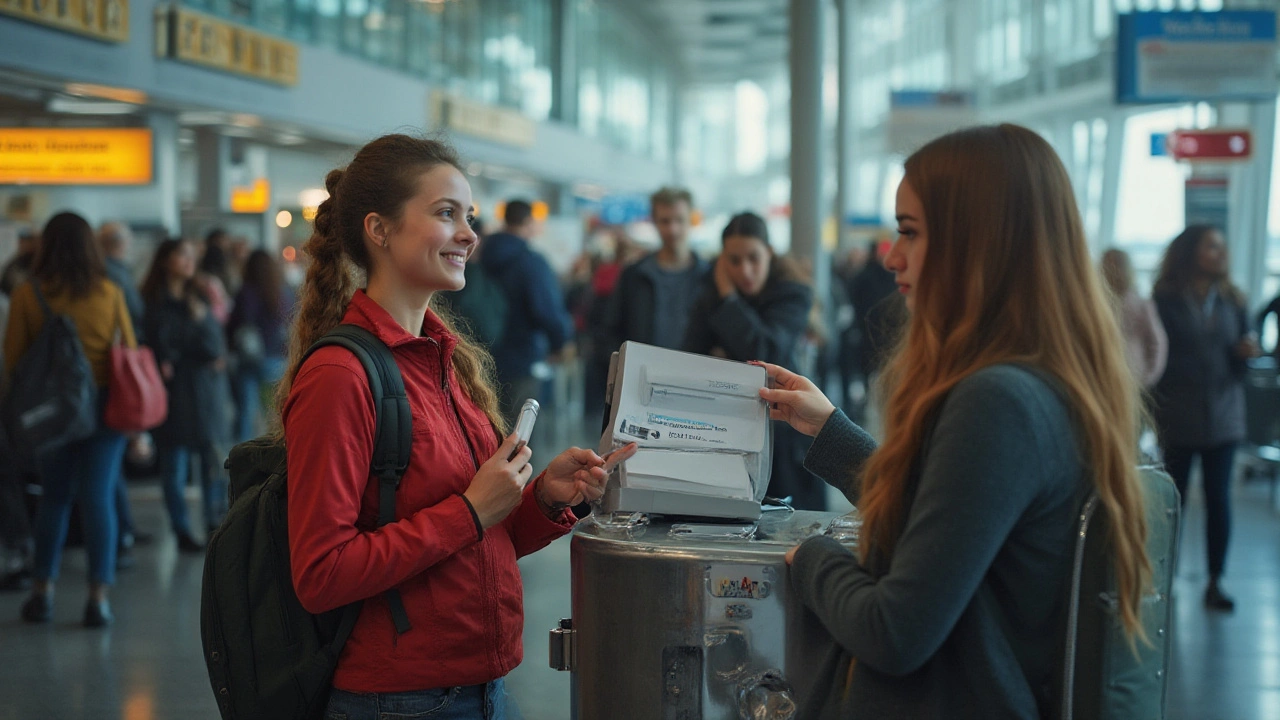
Packing Tips and Safety Rules for Carrying a Wax Heater Internationally
Now that you know you can probably bring your wax heater, let’s get practical. Packing could make the difference between breezing through security or standing red-faced while your suitcase gets unpacked in front of twenty strangers.
Start with the basics: empty your wax heater. If you’re flying, never take it loaded with wax–even solid chunks. Airport scanners can’t always tell if the lump inside is safe or not. Separate your wax beans or blocks and seal them into clear, tough bags. Solid wax isn’t usually restricted, but liquids are. Never—seriously, never—try to fly with hot or melted wax. If the wax leaks, even a tiny bit, you’ll have to explain a mess that looks a lot like a suspicious spill.
List time: Packing your wax heater for travel involves a few smart steps:
- Wrap the cord tightly with a Velcro strap or rubber band so it doesn’t get tangled or bent.
- Place the heater inside a padded travel pouch or, at the very least, wrap it in a thick T-shirt to protect it from bumps.
- If your wax heater has removable parts, like an inner wax pot, zip these into separate bags and label them clearly.
- Pack the power plug or adapter with the heater, but don’t store them attached. Detach everything—inspectors like to see the insides.
- Print (or save on your phone) a simple manual or product image showing it’s a personal care device. It sounds nerdy, but security staff appreciate a quick look at the manual over a confusing explanation in broken airport English.
- If your wax heater is brand new, leave it in its original box, which usually marks it clearly as safe and personal-use only.
- Use a hard-sided suitcase if you can. Even the ‘best’ soft bags get squashed under pressure, which isn’t ideal for electronics.
Now, for the waxing supplies. Solid wax beads go in your checked bag, always sealed. If you think you’ll run out during your trip, check the country’s rules for ordering replacements online. Some airports allow small amounts of depilatory creams or after-wax oils (under 3.4 oz or 100 ml) in your carry-on, as long as they're in a clear, quart-sized bag with other liquids.
Here’s a real trap: disposable spatulas and wooden waxing sticks. They seem harmless, but a big stack of thin wooden sticks might—strangely—draw questions, especially in regions that heavily monitor wooden imports for pest control or deforestation regulations.
If possible, snap a few clear photos of everything you packed for your records. If anything gets misplaced or questioned at customs, you’ll have simple proof of what you brought.
Is there a difference between carry-on and checked luggage for wax heaters? Technically, both are usually allowed. However, many seasoned travelers prefer to stash their wax heater in checked luggage to avoid awkward security checks. Here’s a quick comparison table that outlines how major carriers treat wax heaters:
| Airline | Carry-on Policy | Checked Bag Policy | Special Notes |
|---|---|---|---|
| Delta | Allowed | Allowed | Remove all wax, separate electronics from wax |
| United | Allowed | Allowed | No wax in liquid/gels over 3.4oz in carry-on |
| Emirates | Subject to screening | Allowed | Heating element needs to be off and clean |
| Lufthansa | Allowed | Allowed | Declare at check-in if unsure |
And if you’re traveling with the world’s tiniest wax heater – the sort powered by USB – make sure to check if yours has a lithium battery. Spare lithium batteries are banned in checked luggage, but allowed in carry-on if capped and within watt-hour limits. It sounds fussy but isn’t hard if you check before packing.
Final (often missed) safety tip: clean your wax heater before you fly. Not only does this show it’s for personal use, but it’s also more hygienic and won’t leave you explaining clumps of old wax in a language you don’t speak.
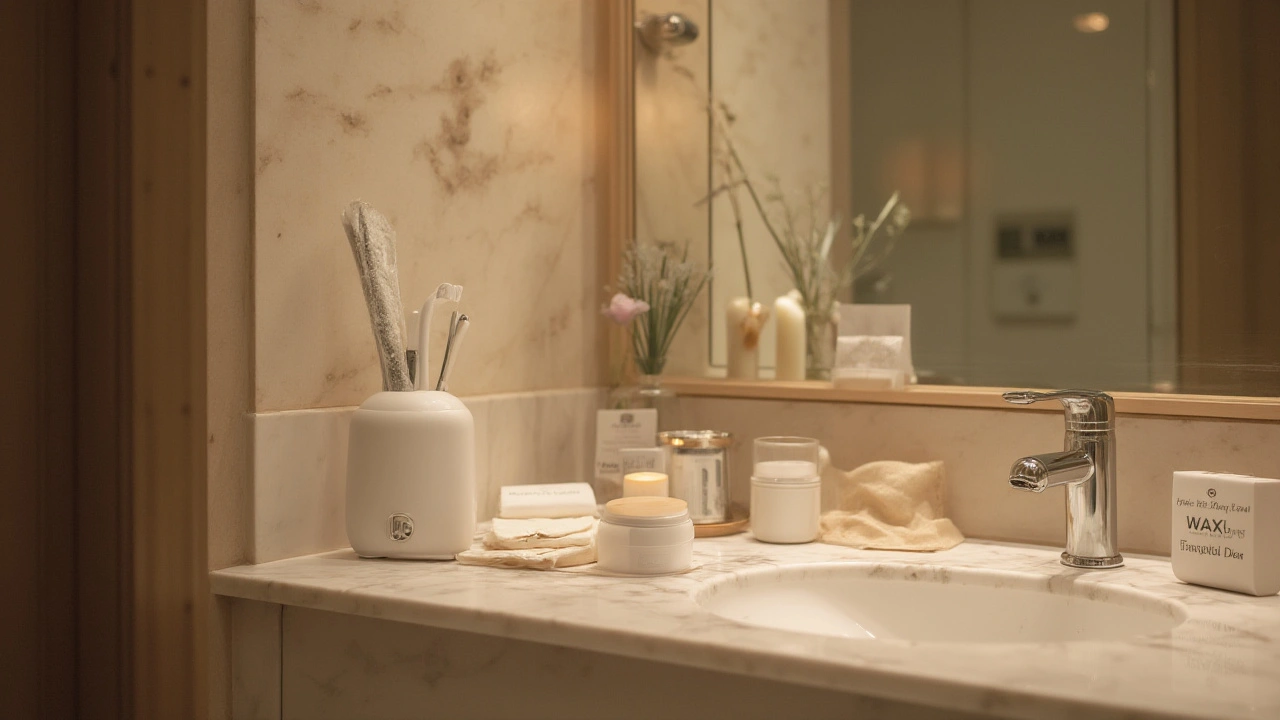
Rules, Risks, and Real-World Experiences
Okay, you’ve made it through packing and airport security, but what actually happens when you land? Here’s where things get interesting. Customs agents in different countries have a reputation for being unpredictable about beauty tools, especially anything vaguely medical or involving electricity.
Let’s get real: I know at least four travelers from Houston who managed to take wax heaters to the UK, India, and Brazil without a problem. But each time, they were stopped for at least a minute at security. One was asked to open the device, show the empty wax chamber, and explain how it worked. Another had to assure customs that the solid wax wasn’t a banned substance. None of their devices were confiscated, but the questions and curious stares were memorable.
True story: In 2023, a traveler flying from Dallas to Dubai was stopped at a layover in Istanbul. Security was worried about the heating element in their wax heater, but when the traveler showed the instruction manual—and the heater was clean and wax-free—they were waved on. Trying to look transparent and cooperative makes a huge difference. It might even be worth practicing a quick, casual explanation, especially if English isn’t used at your destination’s airport.
Risks to consider? Electricity comes first. If you forget your voltage adapter or converter, your wax heater may not work or survive the trip. (You won’t be the first whose device fizzled out at a Paris Airbnb.) And, some travel insurance policies specifically exclude damage caused by plugging electronics into the wrong voltage, so don’t count on a replacement check.
Loss and theft are possible, too. Electronics sometimes go missing, especially when checked. It might sound obsessive, but labeling your wax heater with your email or putting a small Tile tracker inside your suitcase can save days if your bag gets rerouted.
If your wax heater ever gets pulled aside—which happens more at random than because of anything you did—stay polite. Security and customs officials respond far better to prepared, upbeat travelers than flustered, snappy ones. Keep your cool, keep your documentation handy, and you'll get through almost every scenario.
Here are some pro-tips collected from travelers who successfully brought wax heaters internationally:
- Join travel forums or Facebook groups for your destination. People share up-to-date experiences on beauty gear all the time, and you might get answers tailored to the exact airport you’re using.
- If you’re nervous, email or message your airline ahead of time. Most respond within a day about what is and isn't allowed in checked and carry-on bags.
- Pack a backup waxing method, just in case: a few quality strips, or razors, in case the heater hits an unexpected snag.
- For extra peace of mind, bring travel receipts or documentation that show the device is yours and not a resale item. Customs get cranky when they think you're importing for business.
- Always check local regulations for beauty and grooming devices before your return flight. Things you take one way might get questioned the other way, especially in countries with strict import rules.
Don't forget, every wax heater is a little different. Some models are super basic, others beep, flash lights, or feature digital thermostats. If your device looks fancy or has a weird plug, you may be asked more questions than if it's a plain old warmer. If your wax heater has Wi-Fi or Bluetooth features, declare it—some customs stations care about smart devices, too.
The most important move is to be proactive: research your trip, pack smart, and treat your wax heater like any trusty travel gadget. That way, when your flight's over and you’re unpacking on the other side of the world, you won't be left hairy and regretting you didn’t just shave. After all, taking control of your beauty routine doesn't stop at the security line.

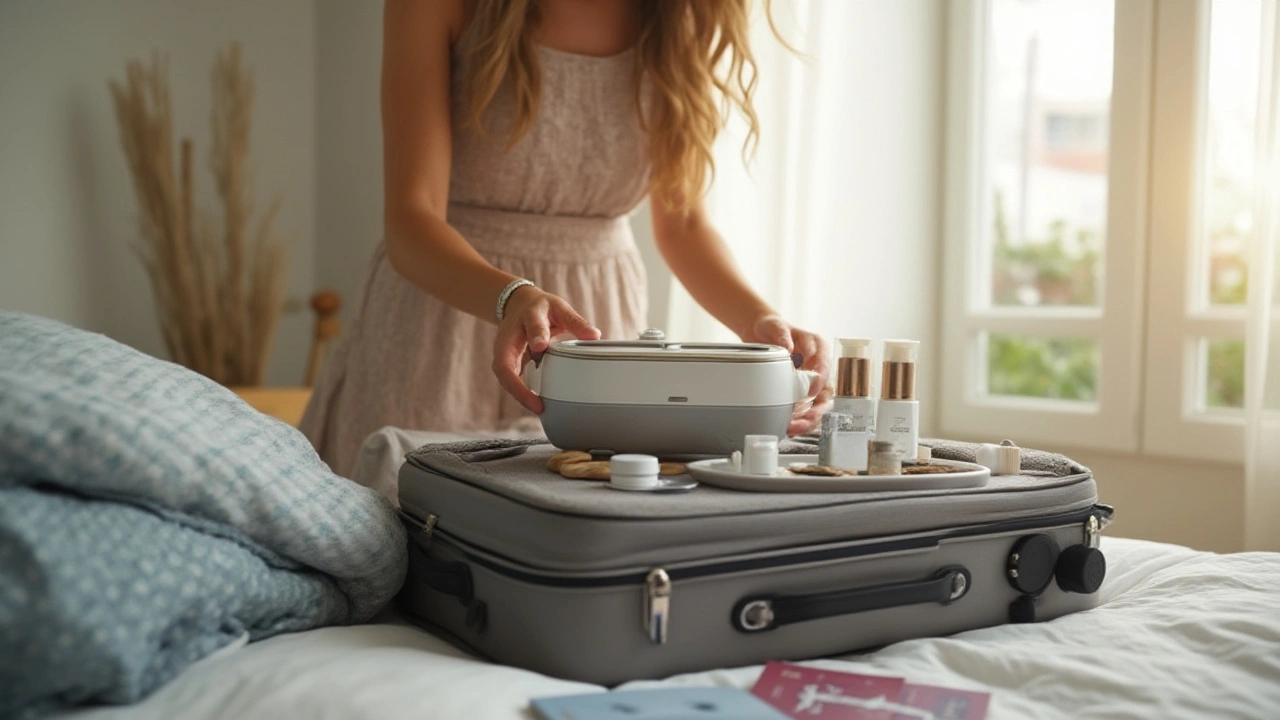

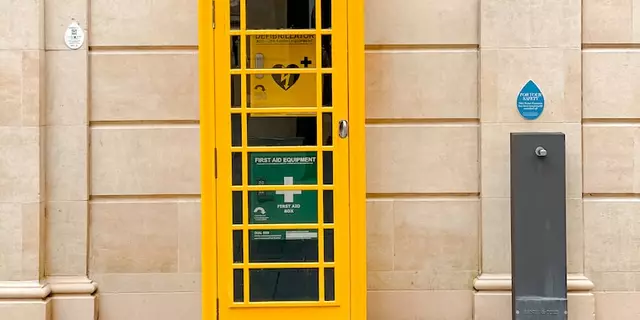


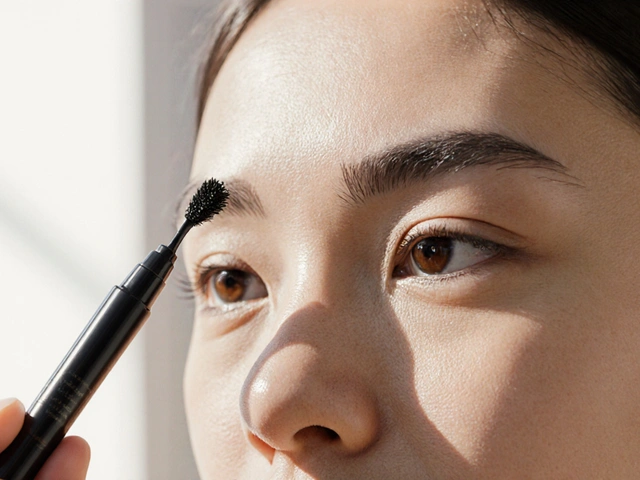
Peter Reynolds
July 17, 2025 AT 22:08Wow, this is a really niche topic but surprisingly useful! I've often wondered about carrying specific beauty gadgets like wax heaters on flights, especially internationally where rules can vary so much.
It's great that this guide focuses on do's and don'ts because you definitely don't want to get caught at security with something that could be flagged or confiscated. Packing tricks always help too, as they can make your experience smoother and less stressful.
One thing that would be interesting to add is any differences in rules between major international airlines or airports, since I bet that could trip up some travelers.
Also, what about the power requirements or voltage differences for the heater in different countries? That might be a factor for people to consider.
Overall, very informative and useful for beauty pros and enthusiasts who travel often!
Fred Edwords
July 17, 2025 AT 22:26Indeed, I appreciate the effort put into detailing airline regulations. In my experience, strict adherence to TSA and international regulations about heating devices and batteries is crucial to avoid complications.
This guide could elaborate on the classification of wax heaters as either appliance or electronic device, as this distinction impacts their eligibility onboard.
Moreover, specifying rules about carrying wax and wax cartridges would be beneficial since some wax types might be considered flammable or liquid substances, subject to varied restrictions.
It might also be worth including a summary of the documented policies of various leading airlines and aviation authorities such as IATA and FAA to give travelers a comprehensive understanding.
That said, the presented packing advice is practical and would serve well to prevent misunderstandings during security checks.
Sarah McWhirter
July 20, 2025 AT 10:26Oh sure, because nothing screams “I’m up to no good” like carrying a wax heater through customs, right?
Honestly, do you think the security folks at the airport are just eagerly waiting to discover your waxing gear? What’s next, a full blow hair salon in your carry-on bag? The paranoia some travelers have about these things is downright hilarious.
But on a serious note, it’s always good to know how to avoid unnecessary drama. Still, I wouldn’t be surprised if some TSA agent eyeballed that device like it’s a doomsday bomb.
At least this guide gives you the lowdown on what’s allowed so you don’t accidentally become the center of airplane security buzz for nothing.
So yeah, take your wax heater if you must, but just brace yourself for some eye rolls and maybe a few extra scans.
Ananya Sharma
July 21, 2025 AT 14:13Well, I frankly find it preposterous that someone even contemplates bringing a wax heater on an international flight. The sheer unnecessary fuss about such trivial items reflects poorly on modern travel culture.
Shouldn't we instead focus on prioritizing security and minimizing risks, rather than indulging in transporting personal grooming kits abroad? It reeks of privilege and misaligned priorities.
Furthermore, the information might seem useful but only encourages disregard for what constitutes essential and non-essential luggage. There are limits to what is reasonable to carry aboard an aircraft.
In my opinion, this sort of guide fuels consumerist babble and distracts from legitimate travel concerns like customs compliance and health regulations.
kelvin kind
July 22, 2025 AT 18:00Honestly, I didn’t even realize wax heaters were a potential issue when flying internationally. Makes sense though—they’re electrical gadgets with heating elements.
As a frequent traveler, I’m always keen to avoid delays at security, so any heads-up about what’s permissible is really helpful.
It would be good to also mention if there are any size or weight restrictions for these devices that could affect carrying them in hand luggage versus checked baggage.
Also curious if the guide discusses the best way to pack the wax itself, since wax might be subject to liquid restrictions.
Thanks for bringing this up—practical advice like this is appreciated!
Ian Cassidy
July 23, 2025 AT 21:46Just to add a bit of jargon here, for those unfamiliar, wax heaters typically contain resistive heating coils controlled by thermostats that could be flagged as electronic heating apparatuses, which might require inspection.
When flying international routes, compliance with ICAO and IATA Dangerous Goods Regulations is paramount, and certain wax products might fall under restricted Goods due to flammability or melting point properties.
Understanding these nuances helps avoid confiscation or travel interruptions.
In my experience, wrapping the heater carefully, ensuring no residual heat, and placing it in checked baggage (if allowed) can mitigate issues.
Highly recommend consulting airline-specific policies as well, since their protocols can vary markedly.
Zach Beggs
July 26, 2025 AT 05:20Thanks for the great post! I’ve actually had to carry a wax heater during some business trips and it really is a hassle if you don't pack it right.
From what I've learned, it’s best to pack the device in your checked luggage when possible, and make sure to remove any batteries if it's cordless.
Also, having a printout or screenshot of the airline's policy can save you some headaches if security asks about it.
One time, I was questioned for a bit, but showing policy statements cleared things up swiftly.
Overall, planning ahead and knowing the rules is key to stress-free travel with specialty items like this.
Kenny Stockman
August 1, 2025 AT 00:13This is a solid guide. Traveling with specialty devices can be a pain, but armed with info, you can avoid a lot of unnecessary stress.
It's always good to keep in mind airline restrictions, but even more important is how you communicate to TSA or airport officials. Stay calm, be clear, and have your documentation ready.
Also, double-check voltage compatibility if you plan on using the wax heater at your destination — it can save you from frying your device or worse.
Does anyone else have tips on protecting fragile electronics when flying internationally? I’d love to hear other methods for packing stuff like this.
Antonio Hunter
August 6, 2025 AT 19:06Adding to the discussion, the nuances of international travel pertaining to electronic beauty appliances are often overlooked. It’s essential to consider not just airline regulations but also the customs policies of the destination country, as these can vary considerably.
For example, some nations might impose restrictions or duties on electronic devices or cosmetic products, which could complicate carrying a wax heater openly.
Therefore, travelers should research the entry requirements well in advance to avoid surprises or potential confiscations. Consulting official government customs websites can offer clarity here.
Additionally, using a carry case designed specifically for delicate electronics that insulates against shocks and temperature changes enhances safety during transit.
Ultimately, preparedness is the best ally when flying with specialized gear like wax heaters.
Paritosh Bhagat
August 10, 2025 AT 06:26Honestly, the fuss about carrying wax heaters seems a little overblown in my opinion. With the amount of stuff people bring that could be hazardous, focusing on tiny devices feels like a distraction from more serious security issues.
Still, if you are intent on taking one, the key is to be precise and truthful on your declaration forms and at the security line. Don’t try to hide or be vague because that’s when you raise suspicion.
One question I have is: Has anyone had real trouble with customs confiscating these? Or are the issues mostly at the TSA level in the US?
It’d be helpful to know the real-world experiences so we can assess whether this is a real barrier or just paranoia.
Anyway, thanks for putting together this guide. It certainly sheds light on something many wouldn’t think twice about until it’s too late.